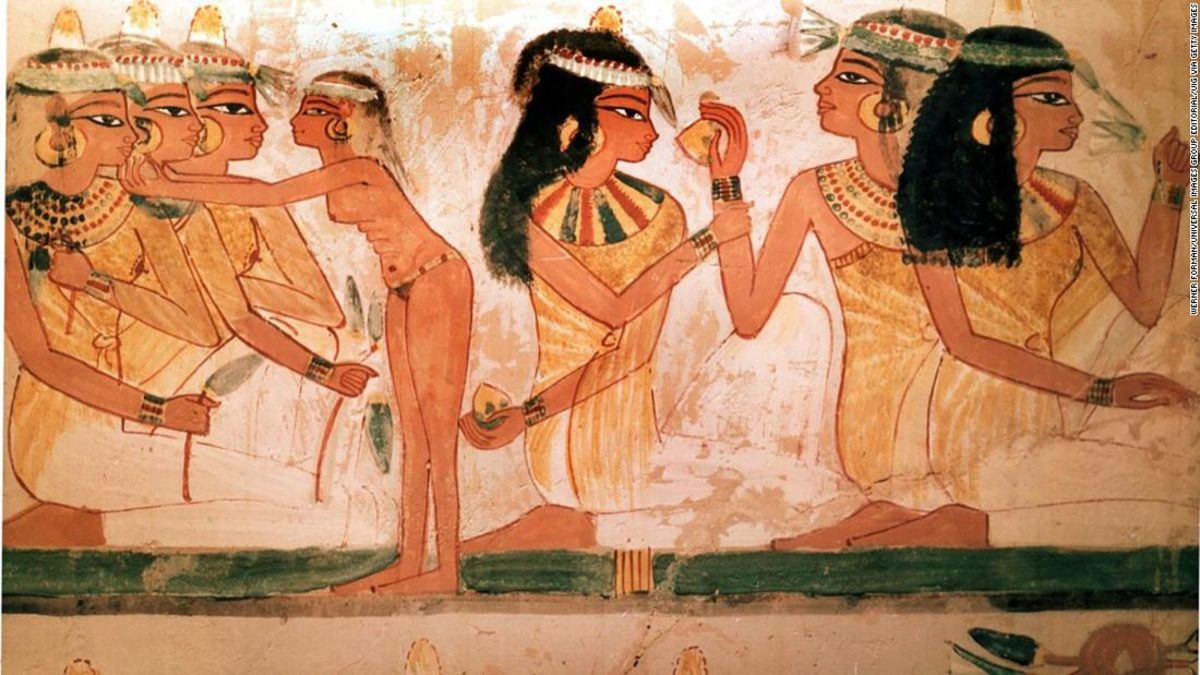
A photo released by Egypt’s Ministry of Antiquities shows the newly discovered tomb.
Egyptian Ministry of Antiquities
Drilling work was suspended following the discovery. Archaeologists quickly found stone inscriptions with fragments of text featuring the name of Ptolemy IV, the fourth pharaoh of Egypt’s Ptolemaic dynasty.
The team has so far uncovered a north-south wall, an east-west wall and the southwestern corner of the limestone structure, which is engraved with carvings of Hapi, the Egyptian god of the annual flooding of the Nile, carrying offerings while surrounded by birds and flowers.

Sarcophagi inside a recetly discovered burial shaft at the Giza pyramid plateau in Cairo.
MAHMOUD KHALED/AFP/AFP/Getty Images
Experts are working to save what remains of the temple, which sits on the Nile’s western bank.
Ptolemy IV is believed to have ruled Egypt from around 221 BC to 204 BC. His rule was not a successful one and he was more interested in frolicking and pursuing artistic endeavors than kingship.
Ancient texts indicate that the Pharaoh is said to have built the largest human-powered ship ever made. Called the tessarakonteres (“Forty”), the galley had 40 banks of oars, operated by 4,000 oarsmen.
The ancient temple’s discovery is the latest in a series of archaeological discoveries in 2019. Egypt is hoping to increase interest in tourism following the country’s uprising in 2011.

A picture shows the inside of the tomb of ancient Egyptian nobleman “Khewi” at the Saqqara necropolis, about 35 kilometres south of Cairo.
MOHAMED EL-SHAHED/AFP/Getty Images
August 2018 saw the UN’s Tourism Highlights Report feature Egypt as the fastest growing tourist destination in 2017, with a 55.1% growth in international arrivals that year.
Important findings include eight mummies from the Ptolemaic Dynasty (323-30 BC) encased in brightly painted coffins at the Dahshur necropolis near Giza, a stone sphinx at Kom Ombo, a riverside temple near Aswan dedicated to the crocodile god Sobek and the discovery of a 4,400-year-old tomb at the Saqqara archaeological site.
These ancient treasures accompany Egypt’s current museum construction boom, with new collections scheduled to open soon in the towns of Sharm el-Sheikh and Hurghada. The long-awaited Grand Egyptian Museum is also nearing completion. The world’s largest museum dedicated to a single civilization is preparing for a grand opening in mid-2020.
